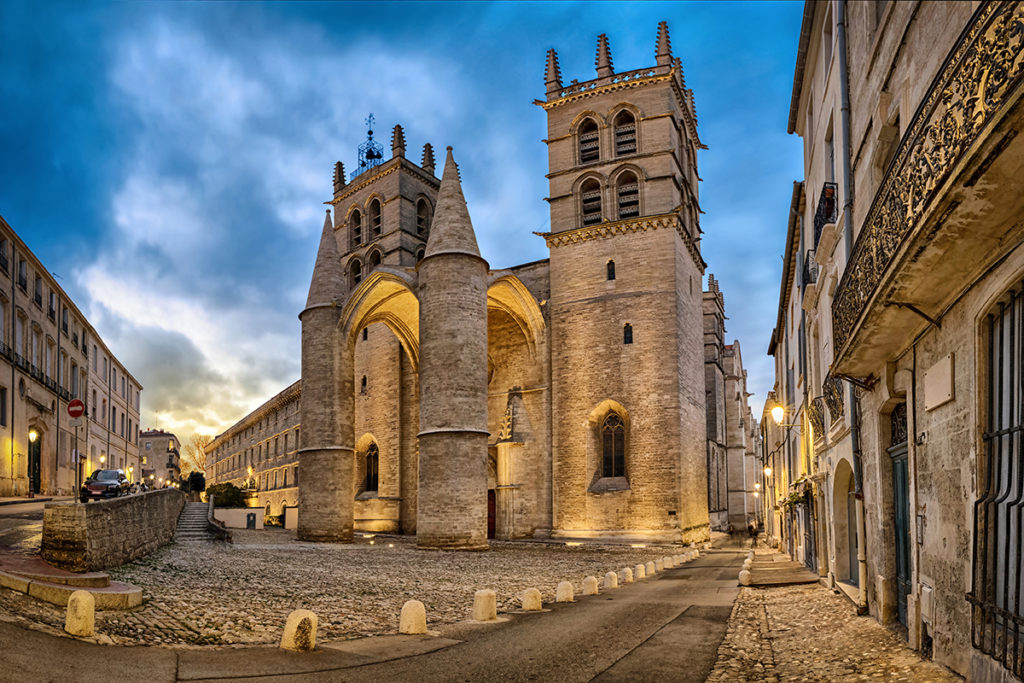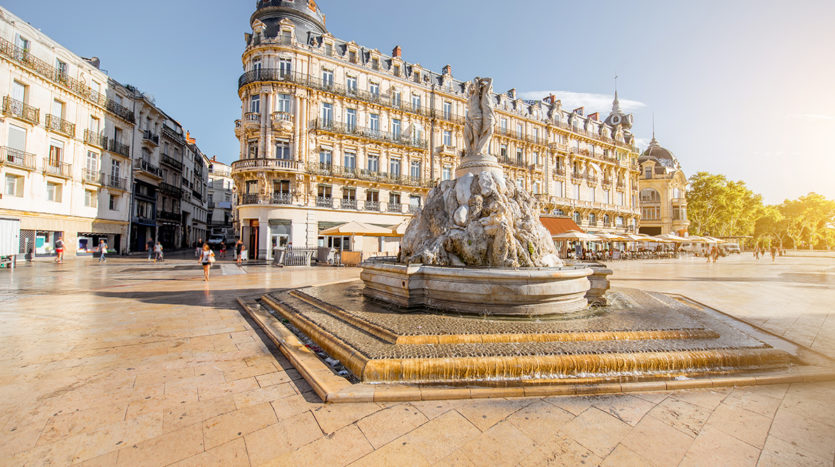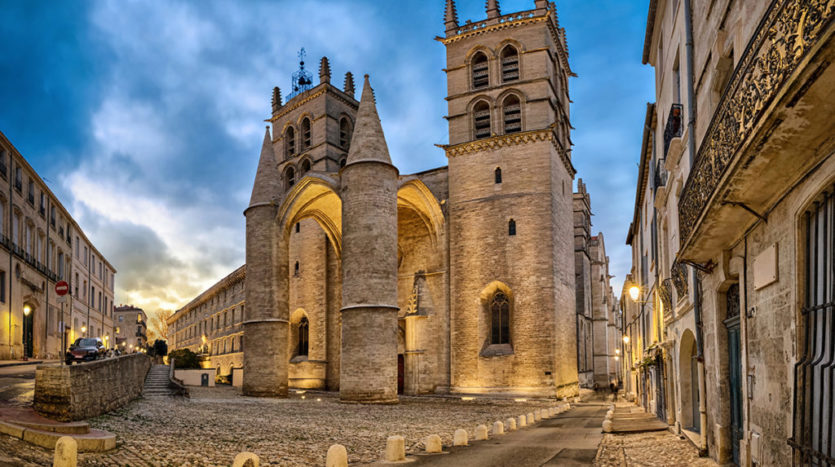The Wonders of Montpellier for A Weekend !
The Wonders of Montpellier for A Weekend!
You’ve chosen to remain in the bright city of Montpellier, and the closeness to the ocean isn’t for nothing. Other marvels, cultural, architectural, and historical in particular, await you there. Let’s have a look at a few of them to help you choose the finest places in Montpellier for a great weekend!
#1 Place de la Comédie
The Place de la Comédie, nicknamed the “egg” because of its ovoid form, is one of France’s biggest pedestrian complexes, with the esplanade around it. It is a symbol of Montpellier, and its central location makes it an excellent gathering spot, particularly near the Three Graces fountain.
The magnificent façade of the Opéra Comédie, whose construction goes back to the 17th century, may be seen among the ancient buildings. Because to the form of its roof, a structure to the north, adjacent to the Gaumont cinema, is known as the diver. The sources of the city’s riches in the nineteenth century are inscribed underneath the helmet depicted: the rail and the vine.
You may be fortunate enough to be there during one of the events that enhance the vitality of the area each year, depending on when you visit: the Comédie du livre in May, the wine market in the autumn, or the Christmas market.
#2 The modern district
Retail lovers will note that getting to this area from the aforementioned plaza enables them to pass close – by? – the Polygone, one of France’s biggest shopping malls. It’s an opportunity to go window shopping!
When you get at the Modern Quarter, you’ll realize that the buildings are well worth seeing. You’ll first see the city hall, which is cubically formed in glass and metal and was designed by creative architects. Philippe Starck’s Le Nuage, Europe’s first private inflatable building, will leave you dumbfounded. The White Tree is probably the most amazing residential structure you’ve ever seen, combining the skills of a famous Japanese architect with young French brilliance. Finally, you’ll be attracted to the Antigone district’s structures, which we’ll return to later.
#3 The Ecusson district
On the opposite side of the Place de la Comédie, the old heart of Montpellier welcomes you. It will provide you with a thousand marvels, such as many artisan stores, mansions that some of you will be able to explore, and beautiful general architecture.
The rue des Trésoriers de la Bourse, the Sainte-Anne plaza and church, the Sainte-Foy chapel, and the Saint-Roche church, patron saint of the city, are all must-see destinations. Finish with the Tour de la Babote, a relic of the old ramparts that, in the 18th century, also functioned as an astronomical observatory.
#4 Saint-Pierre cathedral

Do not leave the area without paying a visit to the cathedral, which is well worth your time. It is the region’s biggest Gothic landmark, featuring architectural and cultural treasures worth visiting. Under the guidance of Pope Urbain V, the chapel of the Monastery-College of Saint-Benoît Saint-Germain, constructed in 1364, became a cathedral in 1536 to fit the episcopal see of the area.
The original fourth tower was demolished during the Protestant iconoclastic activities of 1567, leaving just three towers to soar far into the sky today. The construction shows the cathedral’s function as a fortification, earning it the moniker “Fort Saint-Pierre” in the 16th century. Machicolation, battlements, and walkways are mixed in with religious structures. A porch surrounds the entrance, which is flanked by two enormous pillars that are linked to the cathedral by a vault.
Inside, everything is grand, from the altar, which is encircled by a vermeil altarpiece, to the organ, which was constructed by Jean-François Lépine in 1778 and includes the seven bells, four of which are in the west tower and are used for religious purposes. The drone is the most dangerous in the area, with a diameter of 171 cm and a weight of four tons!
#5 The plant garden
Enter the Jardin des Plantes de Montpellier, which was founded in the 16th century by Henri IV and was initially devoted to the study of medicinal plants. Spread over four hectares, it is the oldest botanical park in France.
You may go on a self-guided tour or schedule a guided tour in advance. Various paths are available, allowing visitors to tailor their visit to their interests in medicinal plants, utilitarian plants, or even the history of the area.
#6 Place Royale du Peyrou
It is an esplanade of more than four hectares near the Jardin des Plantes, giving the opportunity of a stroll rich in tastes. It will certainly provide you with an uninterrupted view of the city and its environs, as well as the 18th century aqueduct that formerly carried water to the city center: a 14-kilometer route!
The 17th century Arc de Triomphe represents the entry to the Ecusson neighborhood, and you may submit a request to the tourist office in order to climb to the top. You will find an equestrian depiction of Louis XIV among the sculptures. Finally, if the unusual arrangement of stones in an arc fascinates you, remember that it is an analemmatic sundial, which is often replaced with a standing man casting his shadow to read the time.
#7 The Antigone district
This site, which is typical of Ancient Greek architecture, is not to be missed by architectural enthusiasts. In a neoclassical style, you are given a true trip back in time. With ivory-colored facades and tall columns, Catalan architect Ricardo Bofill creates an ancient feel in a neighborhood that is firmly contemporary. Efficacy is guaranteed!
Stroll around the Golden Number Square, the Millennium Square, or the Thessaly Square from the Esplanade de l’Europe, the Antigone district’s center. The Olympic swimming pool and the House of Poetry will add to your enjoyment of this unique location.
#8 The castle of Flaugergues
You can get there by vehicle, bus, or tram, and it’s approximately three kilometers from the city center. This castle is one of the first secondary homes of the bourgeoisie, who congregated there for grand celebrations.
It has been listed as a historical monument since 1949 and is still occupied, so visitors may enjoy 18th century furniture, tapestries, and beautiful gardens. A carved staircase known as “with a hanging key” climbs three stories without the need of pillars and is a one-of-a-kind marvel of this location. A sampling in the cellar is also available at the next vineyard!
For those who are interested in discovering what Montpellier has to offer, the sun and the sea are definitely not the only reasons to visit. The Odysseum (leisure center with ice rink and planetarium), different museums (Fabre museum, MOCO), or the nearby caverns will keep the tourist busy on wet days. Finally, you may take a Segway tour of the city for a guided and narrated trip. Enjoy your stay!



